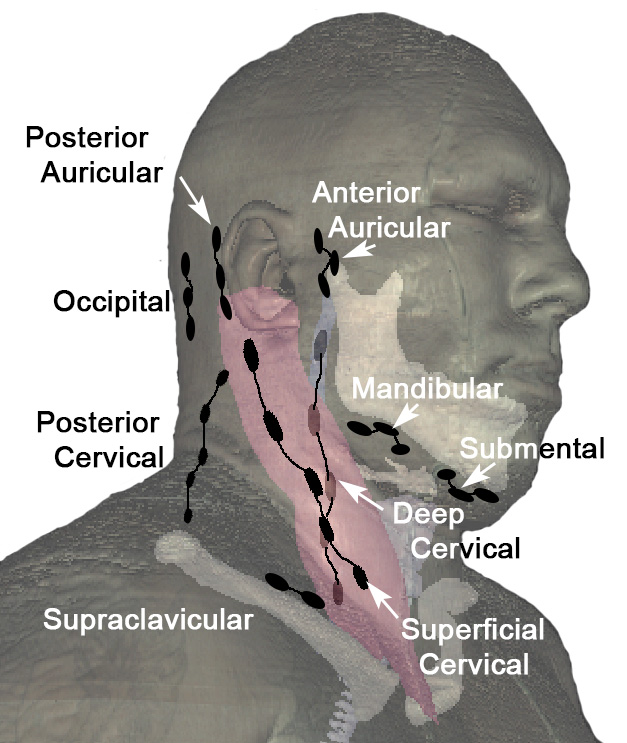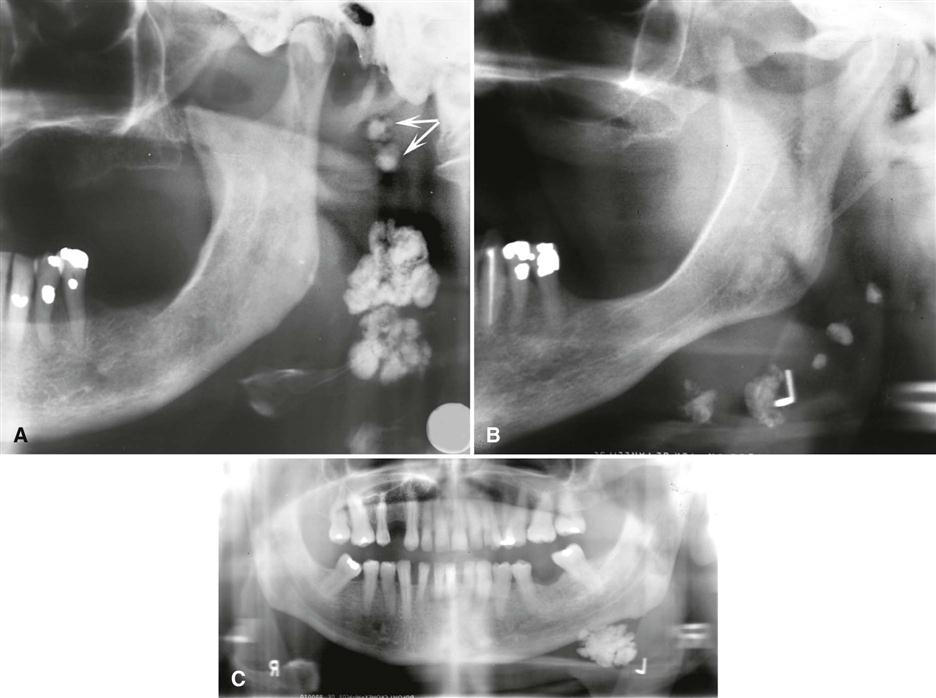

Other than this classification, Classification according to the American Society of Head and Neck Surgery, as mentioned below, according to Berghaus et al. Level VI, Lymph node group of the anterior neck triangle. Level III, Middle jugular lymph node group. Level II, Upper jugular lymph node group.

Level I, Submental and submandibular lymph node group. The drainage area of the lymph glands is at the base of this (5, 6). A uniform description of the lymph node locations is important for diagnostics there is often a relationship between the localization of enlarged lymph nodes and the cause of swelling. It is customary to follow the classification of lymph nodes stations in the neck as practiced by the American Society of Head and Neck Surgery (4). Assessment of the cervical and neck Lymph nodes by palpation from dorsal. Palpation, for example, is a good tool to reveal lymph node pathology of the head and neck area and can be classified in several ways: Picture 1.

Knowledge of the lymphatic system has to be an important clinical standard practice (3). doctor or another specialist, the therapist can perform an global palpation examination on the lymph nodes (1). When there are no clear indications of a craniomandibular and facial dysfunctions in a subjective examination, but a clear dominant asymmetry in the soft tissue is observed and this discomfort is not observed by an E.N.T. Metastases of tumor cells from the surrounding tissue.(1)Įnlarged lymph nodes may have three causes: The changes in the craniofacial area can be regarded as a problem other than that of the lymphatic tissue and thus mask the actual problem. The affected lymph tissue can cause facial asymmetries. In the craniofacial and mandibular area, the therapist often treats asymmetry. Read in this blog the importance of lymph node examination within physiotherapy and ask yourself the question how much attention you should pay to this matter. Sometimes patients are falsely labelled with a simple diagnosis such as tension headache or myalgia of the masticatory muscles if dur-ing the our physical examination the features do not fit the therapist should be alerted and refer patients back to the specialist or GP without delay. Therapists that work on prescription (patients who have been referred and examined by a medical specialist) will rarely need to asses for red flags since they have usually already been excluded by the medical specialist. Unilateral clogged nose and/or bloody nasal discharge.Red & white mucous membranes in the mouth.Painful/ sensitive tongue - non-healing lesion.The Red flags/ alarm signals indicating Neck and throat malignancy by The European Head and Neck society (2017) are as follows: Our screening questions give us the answers to whether or not our patient is in need of medical attention. The Red flags stand for all traumatic, neoplastic and inflammatory processes that require immediate medical attention. These are defined as risk factors for assessment and treatment. Let me first emphasize to be aware of the so-called red flags before we do our physical examination. That way, the hypothesis can be answered or refuted. Sometimes, it is just as a GP inspects the lymph nodes, also useful to do this as a specialized physiotherapist in the oro-cranialfacial region during the physical examination. We all know the swelling of the lymph nodes when we are having a cold.


 0 kommentar(er)
0 kommentar(er)
